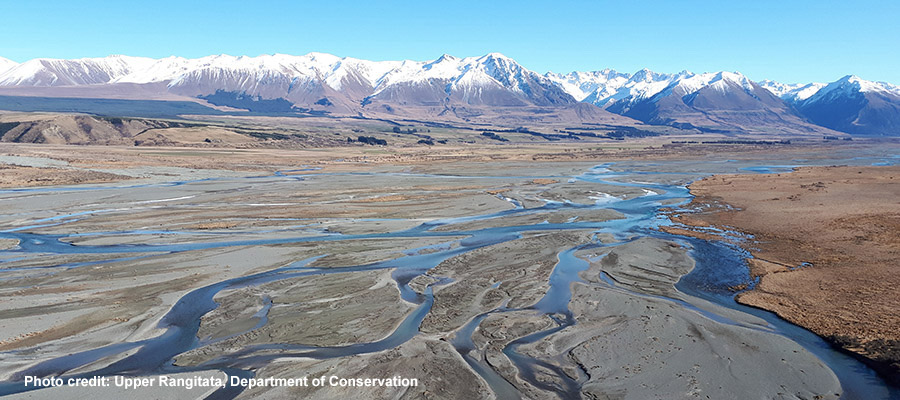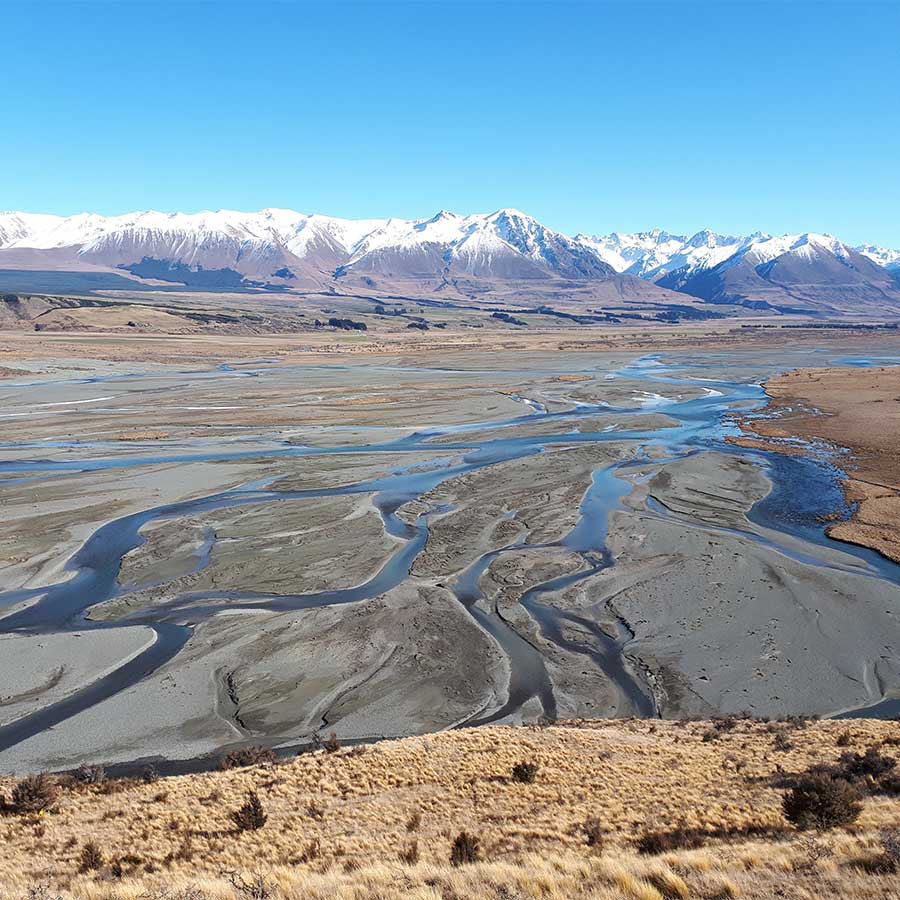
Strategy to revive the Rakitata River launched
An ambitious programme to revive the Rakitata (Rangitata) River is seeking input on a strategy to restore the mauri (life force) of the river.
Ko te Whakahaumanu o te Rakitata Awa, the Rakitata River revival programme, is working to restore the mauri of the river, ki uta ki tai (from mountains to sea). Its vision is a healthy braided river ecosystem where native taoka (treasured species) are abundant and healthy, and people and communities can connect and thrive.
Help revive the Rakitata River!
The Rakitata River revival strategy consultation is now closed. Read the strategy.
The non-statutory programme's strategy sets a vision for achieving a healthy river from its source in Kā Tiriti o te Moana (Southern Alps) to the coastal hāpua (lagoon). It was informed by scientific research and mātauraka Māori and has been brought to life with inspiring illustrations of vibrant, restored ecosystems.
Specific actions are proposed to revive the cultural, environmental and economic aspects of the river for six distinct sections along its length: hāpua, coastal, lower river, foothills, high country and headwaters.
Te Rūnanga o Arowhenua kaitiaki and co-chair of the programme's working group Karl Russell says the severe flooding in 2019 was a catalyst for action to restore the mauri of the river.
"That event cut Te Waipounamu (the South Island) in half for three days by taking out the road and rail links. It triggered a lot of emotions from mana whenua and the community as well as highlighting the issues from a political perspective.
"I think we all realised we couldn't keep using the same methods to manage the river because they weren't working. We saw it as an opportunity to retrieve some of our mana and whakapapa, and to restore the connections and kōrero that had been lost."
Department of Conservation river ranger and working group co-chair Brad Edwards says the strategy aims to strengthen connections and collaboration between the people who interact with the river in many different ways.
"We know lots of people have a connection to the river and we want to hear from them to make sure we get the strategy right.
Protecting our braided rivers
"The Rakitata is a huge braided river system and an iconic Canterbury landform. Braided rivers are rare internationally. Their channels swing and move around naturally with flooding, as we saw in 2019, and this dynamism is important to protect."
He says rivers across Aotearoa, and braided rivers in particular, are suffering from encroachment and intensive land use. The Rakitata is no exception.
Brad is concerned about the decline in birdlife revealed by regular monitoring in the last seven years.
"There's been a reduction in the number of endangered tarapirohe/black-fronted terns and tarāpuka/black-billed gulls that used to nest in the lower reaches. At the same time, we've seen an increase in weeds and predators. I fear some of our treasured taoka are starting to disappear."
Karl believes a focus on the long-term health and wellbeing of the awa is fundamental for building a new future together.
"When the river's needs come first it means that the environment is taken care of and biodiversity is taken care of. We gather around the table for conversations that ask what the river wants and needs, who can use it and who should be around it."
"The strategy we've developed brings those conversations into play. We will have respect for each other when we acknowledge everyone's needs and wants. But the biggest need is the environment and that must come first."
"My hope is that the wider community will look at the Rakitata from a different perspective - not just as a waterway, but as a place that creates life and wellbeing for everyone around it. A place where we can be at one with the environment."
About the Rakitata River Revival Programme
Ko te Whakahaumanu o te Rakitata Awa, the Rakitata River Revival Programme began as a partnership between Te Rūnanga o Arowhenua and the Department of Conservation's Ngā Awa river restoration programme, and now includes Environment Canterbury, Toitū te Whenua Land Information New Zealand, Central South Island Fish & Game, and Timaru and Ashburton district councils in a landscape-scale collaboration.
Many agencies and groups have been working to restore parts of the catchment for decades, with sustained predator and weed control, and significant remediation work after the 2019 flooding. This programme has benefitted from two large Jobs for Nature grants, which are supporting a native plant nursery, fencing and pest and weed control. The immediate repairs to infrastructure after the 2019 flooding were supported by COVID-19 shovel-ready funding, which also funded further enhancement work at those sites.
Rakitata is our preferred name for the Rangitata River as it recognises the local Kāi Tahu (Ngāi Tahu) dialect, which replaces 'ng' with 'k'. So 'taonga' becomes 'taoka' for example.
This work is part of our Braided River Revival/Whakahaumanu Ngā Awa ā Pākihi programme.

